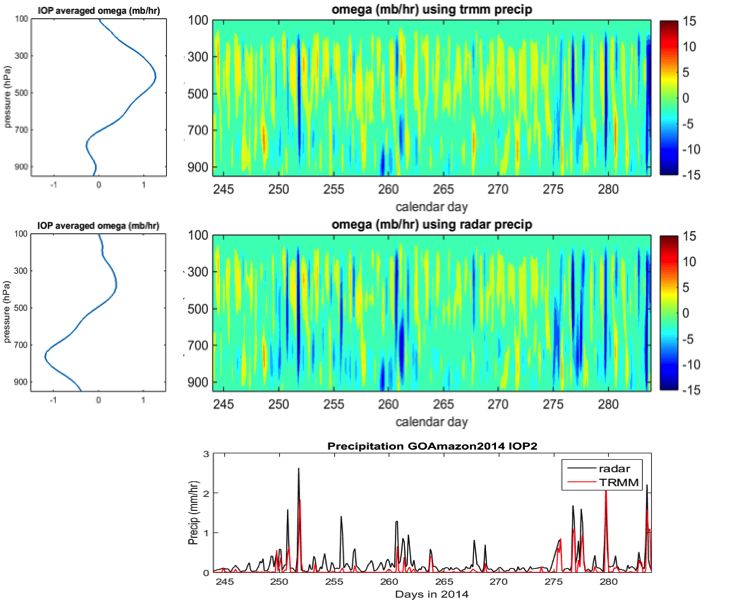Large-Scale Forcing Data for GoAmazon Now Available for Second IOP
Published: 2 November 2015

Taken during the dry season in September and October in 2014, constrained variational analysis of large-scale forcing data for the second intensive operational period (IOP) of the Green Ocean Amazon (GoAmazon2014/15) field campaign are now available. Combining U.S. and Brazilian agencies and institutions and other international collaborators, this two-year GoAmazon field campaign is yielding data sets to understand how aerosol and cloud life cycles in a pristine area are influenced by pollution emanating from a large tropical city.
Available in the ARM Data Archive are two versions of the forcing data from the dry season:
- The version using the SIPAM S-band radar provides information to understand the microphysical and kinematic properties of Amazonian convective clouds and their interaction with the land surface and atmospheric aerosols.
- The TRMM 3B42 addresses the uncertainties of precipitation.
Other constraint variables, such as surface and top-of-atmosphere fluxes and the upper-air background data, are obtained from the European Centre for Medium-range Weather Forecasting (ECMWF) analysis.
The analyzed forcing data cover the area of 110-km radius centered at the SIPAM radar at Manaus, Brazil, with 3-hour time resolution and 25 mb vertical resolution. The data sets are in both ASCII and NetCDF formats.
Forcing data from the first IOP during the wet season in February and March of 2014 are currently being processed to improve surface and radiosonde measurements.
Feedback and use of the data are welcomed and encouraged. For questions or to report data problems, please contact Shuaiqi Tang or Shaocheng Xie. To access the data set, please log into the ARM Data Archive. (Go here to access an account).
# # #
The ARM Climate Research Facility is a national scientific user facility funded through the U.S. Department of Energy’s Office of Science. The ARM Facility is operated by nine Department of Energy national laboratories.
The ARM Climate Research Facility is a DOE Office of Science user facility. The ARM Facility is operated by nine DOE national laboratories, including .
Keep up with the Atmospheric Observer
Updates on ARM news, events, and opportunities delivered to your inbox
ARM User Profile
ARM welcomes users from all institutions and nations. A free ARM user account is needed to access ARM data.


















